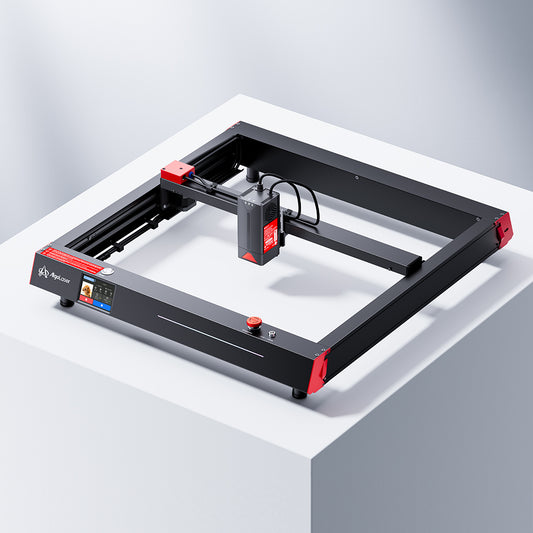How to laser engrave metal with the best laser engraver
Laser engraving is an exciting technology known for its precision and versatility. It involves using focused laser beams to etch or mark materials, especially metal. Its precise, error-free results make it valuable for industries that require intricate designs and personalization.
Metal laser engraving has various applications. It's used in jewelry for personalized designs, in manufacturing for marking serial numbers and logos on metal parts, and in aerospace and automotive industries for part identification and quality control.
Metal laser engraving is essential for enhancing product identification, ensuring compliance with standards, and improving security. Its non-contact, eco-friendly nature adds to its appeal, making it a transformative technology in various industries.
Event Dates: December 5 – January 3
Event Page: 2025 Laser Engraver Christmas Sale
👉 Visit 2025 Laser Engraver Christmas Sale and craft your perfect engraving setup today!
✅ Alpha MK2 40W
🎄 AlgoLaser Christmas Deals – Extra 12% Off!
Christmas Activities (December 5 – January 3)
Christmas Price: $899
Use XMAS12 → Final Price: $791
💰 You Save: $108
🚚 Fast Global Delivery (US/EU/MX/BR) – Free 3–7 Day Shipping
🔗 https://algolaser.com/products/algolaser-alpha-mk2-40w-diode-laser-cutter-and-engraver
✅ Alpha MK2 20W
🎄 Alpha MK2 20W Exclusive Christmas Deal!
Christmas Activities (December 5 – January 3)
Use XMASAK20 → $80 OFF
➡️ Final Price: $499 (Original: $579)
🚚 Fast Global Delivery (US/EU/MX/BR) – Free 3–7 Day Shipping
🔗 https://algolaser.com/products/algolaser-alpha-mk2-diode-laser-engraver-algolaser
⚠️ Note: Discount codes cannot be combined with minimum spend offers (such as “Spend $300, Get $30 Off”). Please select the promotion that gives you the best overall value.

What is Laser Engraving?
Laser engraving involves operating by directing a focused laser beam onto the surface of the material, where it either vaporizes or ablates the material to leave a permanent mark or engraving.
The history of laser engraving traces back to the early 1960s when the first lasers appeared. However, it wasn't until the 1980s that this technology began to find its place in industrial applications. At that time, CO2 lasers became popular for their ability to engrave various materials, including wood, glass, and plastics.
Advancements in laser engraving technologies have been significant over the years. The introduction of fiber lasers in the 21st century revolutionized the industry by improving precision, speed, and efficiency. Fiber lasers are particularly well-suited for metal engraving due to their high power and superior beam quality. Additionally, the integration of computer numerical control (CNC) systems has enabled the automation and intricacy of designs, making laser engraving more accessible and versatile.
Today, laser engraving is a staple in industries like manufacturing, jewelry, and aerospace, as well as the art and customization sectors. It allows for highly detailed and intricate designs, making it a technology of great importance in our modern world.
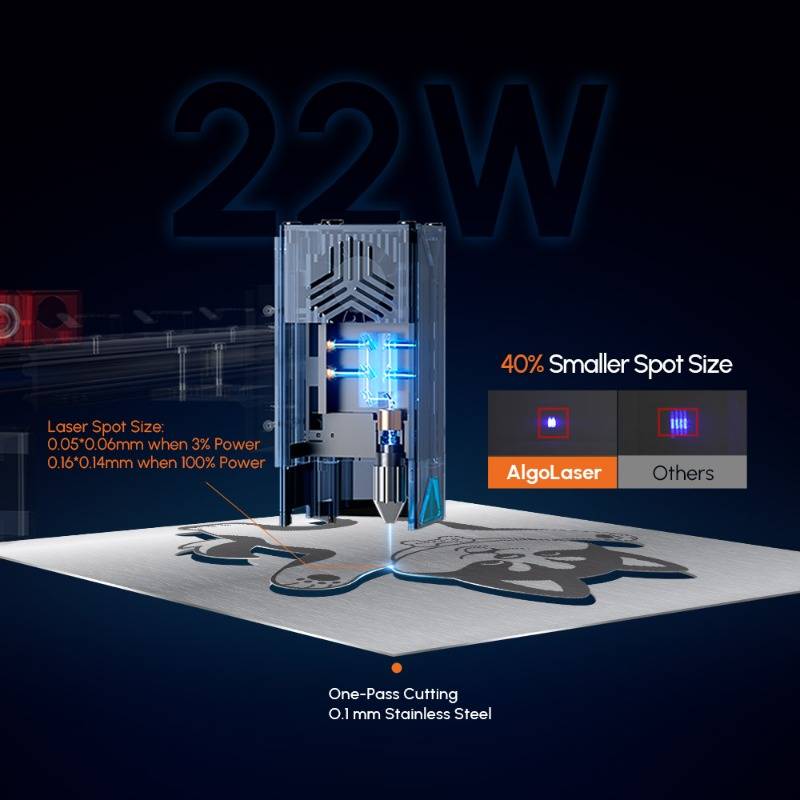
Understanding Metal Laser Engraving Machines
A metal laser engraving machine is a specialized device that utilizes a high-powered laser beam to etch or mark intricate designs, patterns, or text onto various metal surfaces. This technology relies on the laser's precision, which concentrates energy onto a small area, causing the metal to melt, vaporize, or undergo chemical changes. The result is a precise and permanent mark, devoid of physical contact, ensuring the metal's original texture and quality remain intact. Metal laser engraving machines find wide applications in industries such as manufacturing, jewelry, aerospace, and more due to their high precision and efficiency in creating detailed and customized markings on metals.
In metalworking, a range of laser types is utilized for different applications
· Fiber lasers are renowned for their high power and efficiency, making them a popular choice for cutting and engraving metals. They employ optical fibers to amplify and deliver laser energy with precision.
· CO2 lasers are versatile and suitable for metals and non-metals, generating a laser beam using a carbon dioxide gas mixture.
· Diode laser engravers are known for their compact size and are often used for marking and engraving on metals.
Each laser type has distinct advantages, making them valuable tools for specific metalworking tasks, catering to a wide array of industry needs.

image credit: LeatherMoonCo - Etsy
The Benefits of Laser Engraving on Metal
Laser engraving offers a multitude of advantages over traditional metal engraving methods. One of the foremost benefits is precision. Laser engraving utilizes high-powered lasers to etch intricate designs and patterns with unparalleled accuracy. This precision ensures that even the most complex and intricate details can be reproduced faithfully, a feat that is often challenging with traditional methods.
Reliability is another key advantage. Laser engraving is a non-contact process, which means no wear and tear on engraving tools, reducing the need for constant maintenance or tool replacement. This leads to consistent and reliable results, as the laser's performance remains unchanged over time.
Versatility is yet another compelling feature. Laser engraving can be applied to various metals, from stainless steel to aluminum, and even exotic alloys. Furthermore, it can create various effects, including deep engraving, surface marking, or annealing, providing ample flexibility for diverse industrial and artistic applications.
Moreover, laser engraving is a clean and eco-friendly technique, as it produces minimal waste and requires no additional chemicals or inks. It's also incredibly fast, making it an efficient choice for high-volume production.
Choosing the Best Metal Laser Engraving Machine
When choosing a metal laser engraving machine, several key factors should be considered to ensure that it meets your specific needs and requirements. Some of the critical aspects to evaluate include:
· Laser Power: The laser power determines the engraving depth and speed. Higher-power lasers are suitable for thick metals, while lower-power lasers work well on thinner materials.
· Engraving Area: The size of the working area on the machine should accommodate your intended projects. Ensure it can handle the dimensions of the metal pieces you plan to engrave.
· Precision and Speed: Look for machines that offer both high precision and efficient engraving speed. These factors are crucial for achieving quality results and saving time.
· Software Compatibility: Ensure that the machine's software is user-friendly and compatible with various design programs, allowing for easy customization and control.
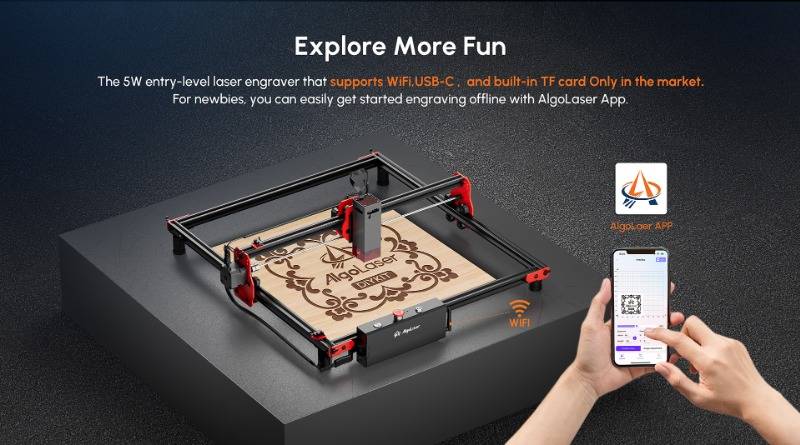
The Metals Can Undergo Laser Engraving
Laser engraving has become a popular method for marking and personalizing a wide range of metal surfaces due to its precision and versatility. However, not all metals are created equal when it comes to laser engraving. The suitability of a metal for laser engraving depends on several key factors, including its composition and reflective properties.
Here's a closer look at some of the metals that can be effectively laser engraved:
· Stainless Steel: Stainless steel is one of the most commonly laser-engraved metals. The high contrast achieved with stainless steel makes it an ideal choice for various applications, such as personalized gifts, industrial part marking, and medical equipment.
· Aluminum: Aluminum is another popular choice for laser engraving. It's lightweight, durable, and can be used for a variety of purposes, including signage, trophies, and consumer electronics.
· Brass and Copper: Brass and copper metals are known for their ability to create beautiful, aesthetically pleasing engravings. They are often used for decorative purposes, jewelry, and musical instruments.
· Titanium: Titanium is a robust and corrosion-resistant metal commonly used in the aerospace and medical industries. Laser engraving titanium is used to mark surgical instruments, implants, and aerospace components.
· Gold and Silver: Precious metals like gold and silver are frequently laser-engraved for jewelry, awards, and high-end accessories. The process preserves the intrinsic value of these materials.
· Nickel: Nickel is often used in industrial applications, and laser engraving can provide clear, permanent markings for parts, tools, and machinery.
· Anodized Aluminum: Anodized aluminum is specially treated to enhance its engraving capabilities. It is widely used in the production of nameplates, labels, and signage.
While these metals are some of the most commonly laser-engraved materials, it's important to note that the specific laser engraving method and machine settings may vary for each metal type. The laser's power, frequency, and speed settings will be adjusted based on the metal's properties to achieve the desired results.
It's also worth mentioning that some metals, such as lead and beryllium, should not be laser engraved due to safety concerns. Additionally, metals with highly reflective surfaces, like polished chrome, may pose challenges for laser engraving.
In summary, laser engraving is a versatile technology that can be applied to a wide array of metals. The choice of metal depends on the application, the desired outcome, and the specific laser engraving equipment used. Proper knowledge and experience with the chosen metal are essential for achieving the best results in laser engraving.
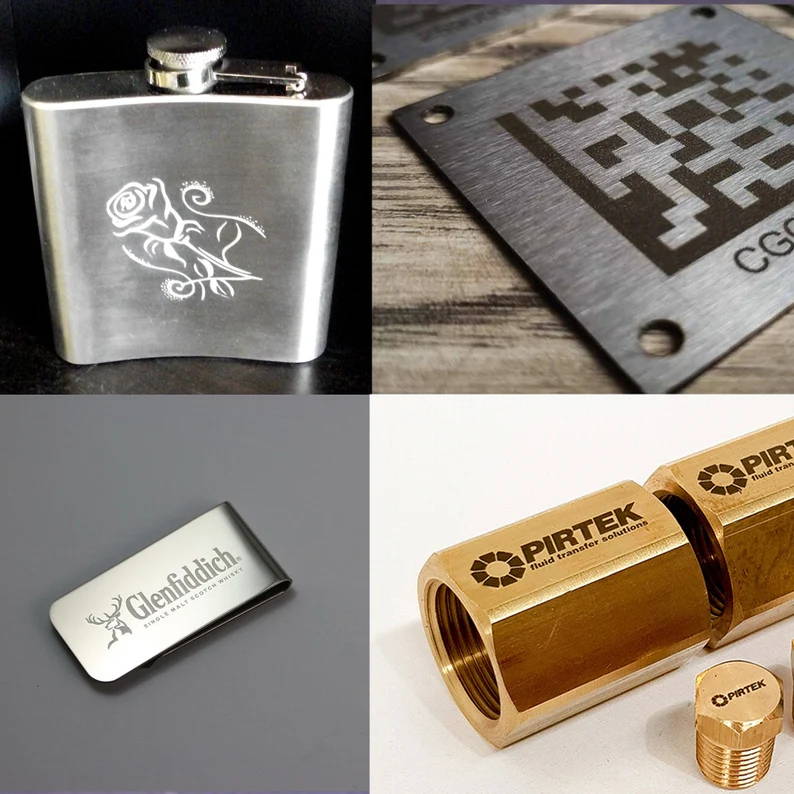
image credit: ThePrintShopCorner - Etsy
Popular Metal Laser Engraving Projects and Ideas
Metal laser engraving is a prevalent and versatile technique for adding intricate designs, personalization, and artwork to various metal surfaces. This process involves using a high-powered laser to remove material and create precise, permanent markings on metals. Here are some popular metal laser engraving projects and ideas:
1. Personalized Jewelry: Engrave names, initials, or special messages on metal jewelry items like rings, necklaces, and bracelets for a unique and sentimental gift.
2. Awards and Trophies: Custom laser engraving on metal awards and trophies adds a touch of sophistication and personalization to recognize achievements.
3. Business Signage: Metal signs with laser-engraved logos, company names, and contact information are a durable and eye-catching way to make your business stand out.
4. ID Tags: Engrave identification information on metal tags for pets, luggage, or equipment for easy identification.
5. Keychains and Keyrings: Create custom keychains with laser-engraved names, logos, or messages for promotional giveaways or personal use.
6. Metal Artwork: Express your creativity by engraving intricate designs, patterns, or artwork on metal sheets or panels, which can be framed and hung as decorative pieces.
7. Firearms Engraving: Many gun enthusiasts opt for laser engraving to add intricate designs and personalization to their firearms, making them unique and distinctive.
8. Personalized Gifts: Engrave names, dates, or heartfelt messages on metal items like lighters, flasks, or pocket watches for special occasions like weddings and anniversaries.
9. Custom Cutlery: Laser engraving can be used to add logos or names to knives and cutlery, making them ideal for culinary enthusiasts and professional chefs.
10. Electronic Device Markings: Manufacturers often use laser engraving to mark serial numbers and branding on electronic devices, providing a durable and tamper-evident solution.
11. Industrial Part Marking: Laser engraving is utilized in industrial settings to mark part numbers, barcodes, and other crucial information on metal components for inventory and tracking purposes.
12. Medical and Dental Instruments: Engraving logos and identification details on metal medical and dental instruments ensure easy recognition and traceability in clinical environments.
13. Customized Watches: Watch enthusiasts appreciate laser engraving to personalize their timepieces by adding names, dates, or unique designs to the watch case or back.
14. Memorial Plaques: Create lasting tributes by engraving memorial plaques with names, dates, and touching messages to honor loved ones.
15. Architectural Details: Decorative metal pieces in architecture and interior design can be enhanced with laser-engraved patterns and motifs, adding a touch of elegance to buildings and spaces.
These are just a few examples of the many possibilities that metal laser engraving offers. It's a precise and versatile method that allows for intricate and durable designs, making it a favorite for both personal and industrial applications.

image credit: BurninDaylightTX - Etsy
Preparing Your Design for Engraving
Metal engraving with a laser machine is an exciting and creative process that requires careful preparation to ensure the end product's safety and quality. In this guide, we will discuss three essential aspects of preparation: safety precautions and personal protective equipment, setting up your metal laser engraving machine and workspace, and calibration and focusing for precise engraving.
Safety Precautions and Personal Protective Equipment:
· Safety is of paramount importance when working with laser engraving machines.
To protect yourself and those around you, consider the following precautions:
· Protective Eyewear: Wear laser safety glasses specifically designed for the wavelength of the laser being used to shield your eyes from potential harm.
· Ventilation: Ensure proper ventilation in your workspace to disperse fumes and prevent inhaling harmful particles released during engraving.
· Fire Safety: Have fire extinguishing equipment readily available in case materials ignite during the engraving process.
· Training: Ensure you and anyone using the machine are properly trained in its operation and safety protocols.
Setting Up Your Metal Laser Engraving Machine and Workspace:
· Machine Placement: Position your laser engraving machine on a stable and level surface, ensuring adequate space around it for ventilation and maintenance.
· Power and Connectivity: Ensure the machine is properly connected to a stable power source and that all cables are secure.
· Workspace Organization: Keep your workspace tidy and well-organized to minimize the risk of accidents and make it easy to locate tools and materials.
Calibration and Focusing for Precise Engraving:
· Calibration: Calibrate your laser engraving machine to ensure that it accurately interprets the digital design. This calibration helps in achieving precise results.
· Focusing: Adjust the laser focus by setting the correct focal length based on the thickness of the metal. A well-focused laser is essential for achieving crisp and precise engravings.
· Test Runs: Before starting a full project, conduct test runs on a small piece of scrap metal to fine-tune the settings and ensure the desired outcome.
By taking safety precautions, setting up your workspace and machine correctly, and focusing on calibration, you'll be well-prepared for successful metal engraving. Remember that precision and safety go hand in hand when creating high-quality engraved metal pieces.

The Process of Laser Engraving on Metal
Laser engraving on metal involves using a focused laser beam to remove material from the surface of the metal, leaving behind a permanent and detailed mark. This process can be broken down into several key steps, take the AlgoLaser Alpha engraving laser machine as an example.
1. Material Selection:
The first step in laser engraving on metal is selecting the appropriate material. Common metals used include stainless steel, aluminum, brass, and copper. The choice of metal depends on the desired appearance, durability, and the application of the engraved piece. Put the material in the engraving area.
2. Design Preparation:
The next step involves preparing the design or artwork that you want to engrave on the metal. This design is usually created digitally using graphic design software, such as LightBurn, AlgoLaser Mobile Apps, etc... The design can include text, logos, images, or intricate patterns, depending on your project's requirements.
3. Machine Setup:
Once the design is ready, the machine should be set up to match the material's thickness and type, as well as the desired depth and quality of the engraving. Focusing the laser beam precisely is crucial for achieving the desired results. Additionally, remember to connect the machine with the air pump, for better engraving results.
4. Boot up the Machine:
With the machine and design settings in place, the laser engraving process begins. The high-powered laser beam is directed onto the metal's surface, removing material layer by layer. Note that laser glasses should be put on to protect your eyes. The engraving process is highly controlled, with the laser following the design's path with pinpoint accuracy.
5. Quality Inspection:
After the engraving is complete, a thorough quality inspection is conducted. This includes checking for any irregularities, ensuring the engraving depth is consistent, and verifying that the design matches the intended result. Depending on the project, additional steps like polishing or coating may be performed to enhance the appearance or protect the engraved surface.
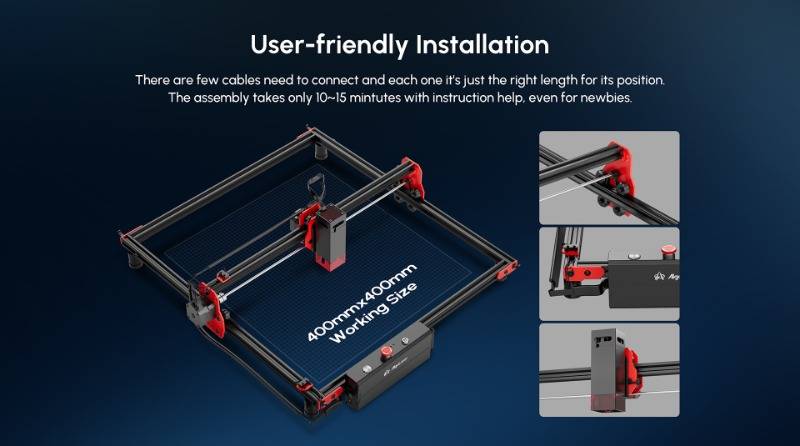
Conclusion
Laser engraving on metal signifies a powerful fusion of tradition and innovation. This technology offers unmatched precision, enabling intricate and complex designs that were once unattainable. Its versatility spans various metals and applications, from industrial parts to personalized gifts, which are distributed to different industries and individual businesses. Additionally, it boasts remarkable efficiency, ideal for large-scale production with minimal waste.
As you explore the capabilities of the best metal laser engraving machines, you're not just etching metal but your creativity, passion, and innovation into every piece. So pick up your tools, and have a fantastic journey in the world of metal engraving.


